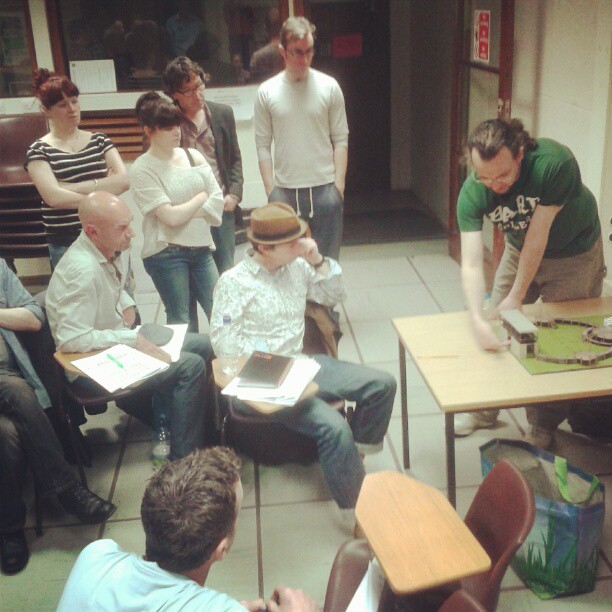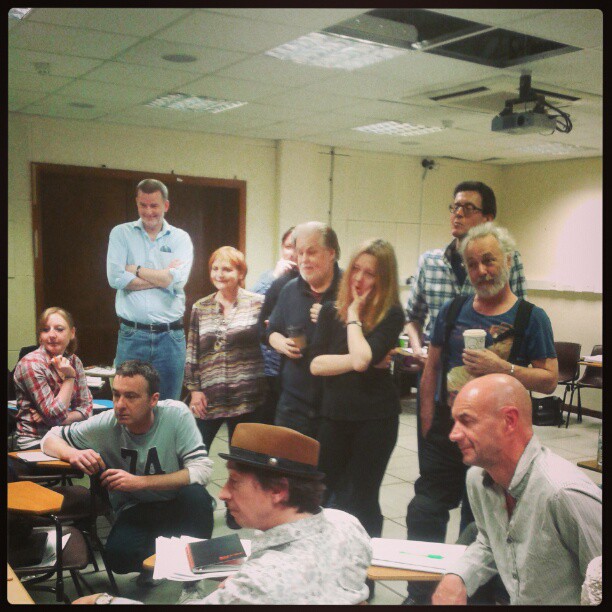Apologies for the delay on this one…
The company saw the set for the first time, locus and platea staging was explained, leading to questions about how they would be using the space, how they would enter and exit. There were also questions about tickets, disability access and food for the audience.
We moved on to talk about text, and the actors expressed some concern with the fact that the script appeared to be half-Scots, and half-English. A particular example of Sensualitieâs line âFlamandâ as the fireâ was used, corrected to âFlaminââ by the research team, but an actor recalled the poetic magnificence of hearing it pronounced âFlammandâ in performance. So it appears that we have over-modernised the text and it became clear that we would need to de-modernise the text as we rehearse our way through it, and find the pronunciations and rhymes that the Scottish actors are comfortable with.
The differences between Scots, English and Inglis were discussed, and the significance of various places, for instance St. Andrews as a clerical and legal centre of power were considered.
After a coffee break, Greg Walker gave a short talk about Kings James IV, V and VI. Discussion of the political culture of early modern Scotland, how authority is distributed and the role of the king followed. Tom Betteridge then spoke about David Lyndsay and his dual role at the Scottish court as herald and poet, saying that both gave Lyndsay authority as poetry wasnât seen as a frivolous activity during the period. Finally, Ellie Rycroft considered the dramatic tradition in which Lyndsay was writing and how Ane Satyre of the Thrie Estaitis compares to other literature and drama of the time.
After lunch, the costume designer, Hilary Lewis, showed her designs to the cast and explained the rationale behind them. The company seemed very happy overall with their costumes, especially the actor playing Hameliness, who was delighted she was going to look so feminine given that she usually plays small boys!








